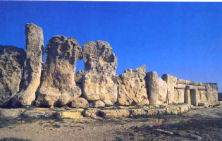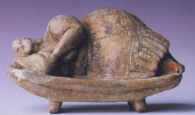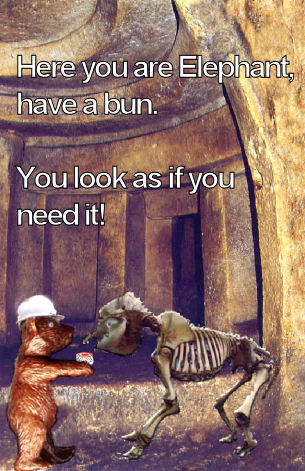Although there are no lectures until September we will continue with a monthly Newsletter which you can collect at the Museum, or read on-line. We hope, in any event, that you’ll call at the Museum – there is always something of interest to see, and someone to chat to over a cuppa. If you would like to play a more active role in the running of the Museum, please have a word with Don, Peggy or any of the other volunteers you see.
As always, items for the Newsletter would be much appreciated, particularly your memories of times past. Are there summer memories you’d like to share? A particular holiday? Please put pen to paper or mouse to computer!
Fund raising June - £334
100 Club
See next month’s newsletter for May, June and July.
Please encourage family and friends to join.
Diary Dates
Saturday 4th July 2009 – Children’s WW2 Street Party starts at the Museum at 10am.
Wednesday 2nd September 2009 – Anniversary of the Rape of the Fair Country by Ivor Beynon.
Please call at the Museum for news of other events through the summer
Lectures start at 7.00pm in the Metropole Theatre, with teas and a chat downstairs in the Museum afterwards. Entry is £2 and the public are most welcome.
Local Voices
“Pit Ponies”
The pit ponies had their holidays along with most of the pit workers during the summer shut-down. As a schoolgirl I remember seeing the ponies from Cwmtillery pit in the fields near the church and whilst glad they were having a break from their work underground, I felt sorry for them with their docked tails and their eyes blinkered against the unfamiliar daylight. My father assured me the ponies were all very well looked after and joked that they were treated better than the men but it didn’t seem right somehow. Jen Price
Penpals
At the beginning of the 1940's, the girls at Nantyglo Grammar School were encouraged by their English teacher to correspond with pupils at a school in Ocean Springs, Mississippi. America had joined the war but to the girls in our class, America was a large country across the Atlantic mainly known as the producers of films and the romantic silver screen. Two girls in the class started writing to two sisters Annette and Jeanette Fox. The friendship flourished via letter writing.
After the war, the sisters, together with some other girls, came to London and worked as clerks at the American Embassy. What better way to spend their free time, than to visit Abertillery? There were about six young ladies who stayed at the Bush Hotel, but their Welsh friends and families made them very welcome in their homes Arrangements were made for them to visit Cwmtillery Colliery where they dug a piece of coal to take home with them together with our traditional bakestones.
The girls returned home to America. Annette married and went to live in Delaware where she had two daughters who were members of the American Girl Scouts. At that time I was involved with Abertillery Girl Guides so we had a mutual interest and the friendship continued. Jeanette married a short while later and was able to visit Abertillery at various times.
So it was no longer a friendship by letters but a more personable thing.
Unfortunately, Annette is no longer with us and one of her daughters too has passed away.
I am very proud that what started as a penpal friendship has survived all these years. I tell Jeanette of my life and interests in Abertillery, what is going on in our museum and send her the monthly newsletters. Likewise she tells me of her life. I was very worried for her friends and family when they experienced the terrible flooding caused by Katrina. Fortunately, they survived this terrible experience, but the country is till having to come to terms with the devastation caused by Katrina.
Annette's interest in the Museum continues and she regularly sends substantial cheques for work in the Museum. I have recently handed a very nice cheque to Bernard the Treasurer, from Jeanette who is very proud to be a vice-president of Abertillery & District Museum.
Vera Smith
“Camping Holidays”
We used to go camping before the war. We went by train and the bus used to meet us at Barry Station and take us out from there. I went twice to winter and summer camp which was at Rhoose. We went just before war was declared in the July (1939). Two teachers would come with us and we used to have lovely times. It all came under the county. They paid for us to go. We had big, long dormitories with double-decker beds, like they call bunk beds now, and you had to go up to the kitchen for food. We used to have concerts and entertainment there, it was really lovely. They had a big square there and the airport is all built over where that was now. The boys used to be at Gileston in a separate camp and one day we walked from Rhoose across the beach, when the tide was out, to Cold Knap and all the boys were there and we had a whale of a time. They’d treat us to pictures and we didn’t pay for nothing only our pocket money. We used to have a tuck shop and we copuld keep in touch with the family. I think we used to go for a fortnight if I remember rightly and we’d have lessons as well. They had one dormitory there which was like a schoolroom and we’d have lessons there at different times of the day. My schooldays were happy times. I enjoyed them. (AH)
The above extract is from the book entitled ‘Voices of Abertillery, Aberbeeg and Llanhilleth’ copies of which are available for sale at the Museum.
Local Organisations
ARE THEY BLOWING THEIR OWN TRUMPET ENOUGH ?
No. I don't think they are. I am of course referring to Abertillery Town Band.
What an asset they are to Abertillery. A few years ago I heard that this band was struggling, both financially and a slow influx of players. What a difference after a few years. I recently spent a lovely evening listening to these wonderful musicians. The players were great. the Flugel soloist Leslie Taylor and Cornet soloist John Harris together with the lovely voice of guest artiste Hannah Webley presented a musical treat second to none. Praise must be given to the conductor who must have worked very hard to bring this band to such a high standard. At this concert the supportive band was from Germany' “Musikverrin Einigkeit Rheinhaussen” who were also very good.and most of the players were young people.who were very gifted.
Please Abertillery Town Band let us hear more from you.and Abertllery citizens please support this lovely group of musical instrumentalists.
The Roving Reporter
Local Gems
Aberbeeg Packhorse Bridge
Although covered with a concrete surface and a modern handrail and fence, the Aberbeeg Bridge is a well-preserved example of a 17th century packhorse bridge and comprises single-span, stone-built arch some 10.5m long, 2.2m wide.
The earliest known record of the bridge is found in a survey of the boundaries and customs of the manor of Wentsland and Bryngwyn (of which the parish of Llanhilleth formed a part) dated 1659: “a river there called Eboth which said Brook and River are the mears Between the parish of Lanhilleth and parish of Mynuthusloin and so upward . . . to a place called Cymmarddwy Eboyth which is the meeting of two Rivers of that name in which place are the meeting of Three parishes that is to say Lanhilleth, Aberustruth and Mynuthusloin and so along the river called Eboyth vychan to the middle of a bridge there called Pont y Cymmar and from thence as the Highway leadeth towards the parish Church of Lanhilleth . . .”
At this time, the bridge was known as “Pont y Cymmer” (“the bridge at the confluence of two rivers”). In this case, the confluence was that of the rivers Ebwy Fawr and Ebwy Fach that formed the boundary between the parishes of Aberystruth and Llanhilleth. By 1775, it was known as Llanhilleth Bridge and the Minute and Account Book of the parish of Aberystruth (GRO D.739 Vol I) records repairs carried out in that year by a John Watkins at a cost of 12 shillings, one penny and ha’pence! In 1779, Edmund Jones recorded that there were ten stone bridges in the parish of Aberystruth (Jones, p. 56). Aberbeeg Bridge is the sole survivor.
Local tradition maintains that John Wesley, the founder of Methodism, preached at the bridge. However, despite the fact that John Wesley did visit the parish in April 1740 during his second visit to Wales, there is no mention of the place in either his Diary or Journal. On Tuesday, April 8th, in the company of Howell Harris, he travelled from Pontypool to Llanhilleth and preached there on the text “I know that in me dwelleth no good thing”. He stayed overnight and, the next morning, read prayers at St. Illtyd’s church before preaching on “I will heal their backsliding, I will love them freely”. He then travelled on to Cardiff.
By 1828, the Monmouthshire Tramroad, which ran from Nantyglo Ironworks to Newport, ran past the bridge on the east bank of Ebwy Fach (GRO D.397.390). The 1843 tithe map for the parish of Llanhilleth (GRO D.1163) shows that by this time William Webb had already established his brewery and public house near the eastern end of the bridge. (source: Blaenau Gwent CBC website)
Poet’s Corner
“TO SEE THE SEA .”
By bus we travelled,
for a our first day by the sea,
Organised by a social club,
we children travelled free.
Money clinking in a pocket,
sandwiches to sustain us all day,
With constant excited chatter,
we were sped on our way.
Barry Island was a marvel,
popular day-trippers paradise.
Everything so very different,
to where we’d spent our lives.
Down the crowded beach
we slowly made our way,
Then paddled in calm water,
watching others at their play.
Clouds dodged summer sun,
but dreaded rain kept away,
So there was nothing to spoil,
enjoyment of our special day.
Such a crowded beach with,
hardly room to place a deckchair.
It seemed that all South Wales,
had come for a breath of sea air.
Sandwiches eaten, we wandered
past photographers and vendors,
to enter the huge fairground,
with its pleasures and wonders.
Then when the sun sank low,
we wearily boarded our bus,
Singing as we travelled home,
for life seemed very good to us.
Gordon Rowlands, December 2008
National Museum, Cardiff
From 3 rd July you can enjoy the following four themed galleries dedicated to celebrating art in Wales:
- Welsh artists in the 18th century
- Welsh landscape
- Nature
- Art in Britain in the 18th century
Definitely worth a visit!
Museum Matters
Those who attended the series of 6 lectures on European Archaeology by Frank Olding at our museum will remember that the best preserved Neolithic Temples sites are on the islands of Malta and Gozo. As our holiday this year was at Malta Peggy and I were determined to see as many of these sites as possible.
We arrived at our hotel in Qawra (Owra) St Paul's Bay and discovered that it was a curved building built around a Neolithic Temples site which was incorporated into the hotel's grounds.
Our first visit was to the National Museum of Archaeology in Valletta. The museum houses artefacts from the Neolithic and Bronze ages including beautiful pottery effigies, stone carvings from the Tarxien (tar-sheen) and other sites. These have been removed from there original sites to the museum for conservation sake. Other artefacts are on display from the Roman and other eras.
Next was the Hal-Saflieni Hypogeum ( a Greek word meaning underground). The Hypogeum is an underground Neolithic temple cut out of the living rock by the light of flickering tapirs. The skill of the people who cut out the pillars and roof, using flint tools sometime between 4,000and 2400 BC beggars belief. 7000 people’s remains were found buried here; many artefacts have been removed to the National Museum of Archaeology in Valletta.
There are three main levels the upper level a circular cavity surrounded by rock hewn burial chambers, on the middle level is the Holy of Holies a chamber caved to look like a megalithic temple above ground. It shows the ceiling or roof and is an important guide for archaeologists on how they were built.
The Central Chamber is also carved to look like an interior of a building; some of the vertical lines are carved to give a fish eye effect. The Decorated Chamber is covered with patterns of small holes and traces of painted decoration. It was here that the statuette the Sleeping Lady was found. Also n a chamber of this level is a hole known as the Oracle Hole. If a person with a deep voice speaks into it the whole room resonates. This does not happen when someone with a less deep voice speaks into it.

In the Oracle Chamber are wall paintings that cover the ceiling. The painting was done using mineral pigment called red-ochre; its bright red colour suggests blood and life.
To aid conservation visitor numbers are limited and visits must be booked months beforehand. But beware of rogue traders even when they have seemingly impeccable credentials. We were had!
 A boat trip to the Island of Gozo was required to visit the next site the temple of Ggantija (Jig-antiya ). It is considered to be the oldest free standing structure yet discovered in the world. The name Ggantija means giant woman, the huge stones of the two temples were said to be set up by her in 3500 B.C.
A boat trip to the Island of Gozo was required to visit the next site the temple of Ggantija (Jig-antiya ). It is considered to be the oldest free standing structure yet discovered in the world. The name Ggantija means giant woman, the huge stones of the two temples were said to be set up by her in 3500 B.C.
Tarxien (tar-sheen) 4 th millennium temple on Malta is an important archaeological record. The middle temple dated 3200 BC is the larger and more accurate than the earlier ones at Ggantija. Libation holes, used to worship the gods of the underworld can be seen. Many of the original carved stone slabs depicting bulls and pigs have been removed to the Archaeology Museum in Valletta as previously stated with copies now in their place at the temple.
 Two temples close to each other are Hagar Quim (Him) a number of Fat Ladies statuettes were found here indicating a fertility shrine. The other temple site is Mnajdra (im-naydra ) made up of two temples dated 3400BC.
Two temples close to each other are Hagar Quim (Him) a number of Fat Ladies statuettes were found here indicating a fertility shrine. The other temple site is Mnajdra (im-naydra ) made up of two temples dated 3400BC.
 The Ghar Dalam Cave system has a small museum attached which houses hundreds of bones and fossils from the Pleistocene period found in the cave. These include dwarf hippopotamuses and elephants.
The Ghar Dalam Cave system has a small museum attached which houses hundreds of bones and fossils from the Pleistocene period found in the cave. These include dwarf hippopotamuses and elephants.
All this and I have not mentioned St Paul, the Cathedrals, Basilicas, Churches and all the other historical sites and museums!
Don Bearcroft Curator
